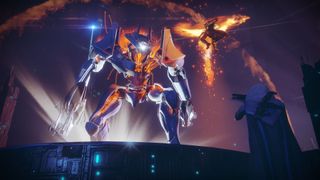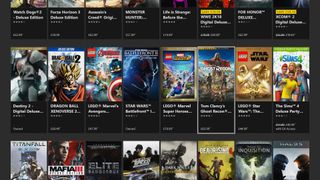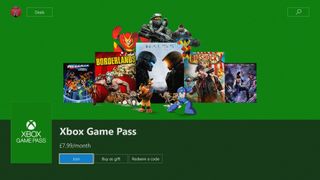How game development is changing the way we buy
As games get better, should pricing really stay the same?

The coming year is shaping up as a promising period for Microsoft's gaming efforts, following the launch of last year's flagship console, Xbox One X. Now the time to prove the hardware's true capabilities, a variety of ambitious titles are on the horizon, expected to leverage its additional horsepower.
While games continue to push boundaries, one aspect has remained unchanged. Scale, potential and development costs grow, yet the standard $60 price of entry has remained constant between recent console generations. Here's how recent development trends may change the way you buy.
Big games, better value

Games are now bigger than ever. Open worlds, cutting-edge graphics and hours of content are all familiar sights in today's influential titles. Marketing often drives the scale and depth of these digital worlds, with each iterating on its predecessors in some regard. Top publishers now dedicate teams of hundreds on individual projects, continuing to scale alongside consumer expectations. Games simply demand an extraordinary quantity of resources to develop.
An industry-wide shift towards the "Games as a Service" (GaaS) model plays a significant role in this, with heightened investment in titles after they've hit store shelves. Buyers now come to expect post-launch content, tweaks, and other types of active support, meaning that development cycles are longer than before. Many games are now sold as a platform, on the promise that time and monetary investments carry through in the months or years ahead.
Buyers now come to expect post-launch content, tweaks, and other types of active support.
While not the ideal way to experience many GaaS titles, it's now possible to make a single $60 purchase and still have a regular flow of content going forward. The time to dollar ratio has always been higher for games than most media and it's only more apparent with this model.
More than just a game

Following the adoption of GaaS models, it's more expensive to develop, ship and maintain a game than it was a decade ago. Development costs have grown with the industry, while games are still priced around $60 at launch. If the cost of making games is higher, why isn't the price of entry for consumers too?
Across many titles, the increasing costs of development are offset through other monetization methods. It's now widely known that downloadable content, microtransactions, and loot boxes have all proven successful as additional revenue streams. Publishers frequently source these monetization schemes as a tool for supporting development after launch, without modifying the initial asking price. While there's strong debate over intrusive microtransactions, there is some truth to the reasoning.
Get the Windows Central Newsletter
All the latest news, reviews, and guides for Windows and Xbox diehards.

The cost of gaming has steadily increased, albeit not through the price tag on the shelf.
In many ways, the base entry price of games has already risen – just that many of us haven't noticed it. If you look at any modern big budget title, there's no shortage of "deluxe editions," "gold editions" and other variants with supplementary content at launch. To get a "complete" experience, you'll likely be paying more than $60 in some way.
Through these practices, publishers have found routes to indirectly raise the price of their titles, while obscuring the change from the average buyer. The cost of gaming has steadily increased, albeit not through the price tag on the shelf.
Changing the way we buy

While buying discs and digital licenses is likely here to stay, other means of obtaining games are making an appearance on the market. As seen in other entertainment industries with Netflix and Spotify, all-inclusive streaming services can offer an appealing library of content for a monthly fee. Upcoming services like "Xbox Game Pass" apply this distribution model to games, providing access to over 100 Xbox games for $9.99 per month.
Microsoft continues to expand Xbox Game Pass, recently committing its upcoming first-party blockbusters to the service at launch. Going forward, all future Microsoft Studios titles will be tied to the service's library at release, under the same monthly fee. Among these offerings is Sea of Thieves, Crackdown 3 and State of Decay 2, as well as upcoming Gears of War and Halo series entries. This move singlehandedly shifted my thoughts on Xbox Game Pass, now as a must-buy for many Xbox One gamers.

This accompanies Microsoft's recent venture for richer gaming services, using Xbox Game Pass and its biggest titles to drive further investment. While cutting costs for some, the service also provides a gateway for players who may have otherwise skipped the title. This is only set to expand, with talk of an upcoming cloud game streaming service, built on similar values to Xbox Game Pass. Don't be surprised if Xbox Game Pass (and similar services) play a bigger role in Xbox going forward.
The cycle of how we buy and consume games is forever changing and with the recent growth of digital services, new routes for distribution are opening. Services like Xbox Game Pass provide a new value proposition for gamers to consider, as the industry only continues to grow. Today, maybe it's harder to put a price on a game than ever before.
What do you think about the price of games in 2018? As always, make sure to drop your thoughts in the comments.
Matt Brown was formerly a Windows Central's Senior Editor, Xbox & PC, at Future. Following over seven years of professional consumer technology and gaming coverage, he’s focused on the world of Microsoft's gaming efforts. You can follow him on Twitter @mattjbrown.

